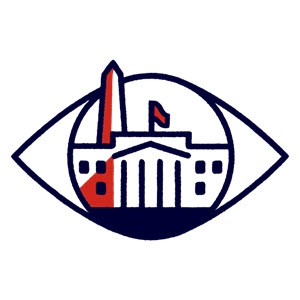Families First Coronavirus Response Act (FFCRA)

The Families First Coronavirus Response Act (FFCRA; "The Act") was signed into law on March 18, 2020, and generally requires employers with less than 500 employees to provide a certain amount of paid sick and paid leave to employees affected by COVID-19, and provides affected employers with a corresponding employment tax credit. In addition, the FFRCA temporarily expands Family and Medical Leave Act (FMLA) requirements to offer protected leave related to the coronavirus. The Act contains three sections of particular interest for employers:
- Emergency Family and Medical Leave Act Expansion
- Emergency Paid Sick Leave
- Tax Credits for Paid Sick and Paid Family and Medical Leave
Which Employers Are Affected?
Generally, the legislation affects private-sector employers with under 500 employees. The Department of Labor (DOL) will issue regulations to exempt certain health-care providers and emergency responders from requirements that they offer paid family leave and paid sick leave; as well as small businesses with fewer than 50 employees, if such requirements would jeopardize the viability of the small business.
Tax Treatment of Paid Sick Leave and Paid Family and Medical Leave Payments
Covered sick and family leave payments under the Act are taxable wages for income and employment tax purposes, except that such wages are exempt from Employer Social Security taxes. Such payments are subject to Medicare taxes, but the tax credit is increased by the amount of employer Medicare taxes (i.e., 1.45%) paid on such wages.
Notices
Employers must post a notice of the requirements described in this Act, "in conspicuous places where notices to employees are customarily posted." The DOL is to publish a model notice within seven days of enactment.
Emergency Family and Medical Leave Expansion Act (Emergency FMLA Act)
Employees who have been employed for at least 30 calendar days are eligible for up to 12 weeks of job protected leave; i.e., leave under both the FMLA and the FFRCA is limited to 12 weeks total. Employers with fewer than 25 employees are not required to provide job-protected leave for an employee in specified circumstances.
Expanded FMLA leave is available only when an employee is unable to work (or telework) due to a need to care for a son or daughter under the age of 18 if the child's school or child-care provider is closed due to public health emergency with respect to COVID-19 declared by a federal, state, or local authority.
The first 10 days of the leave can be unpaid. An employee may elect to use accrued vacation, personal or medical or sick leave for those days, including paid sick leave as provided by this Act. The remainder of the leave must be paid at two-thirds the employee's regular rate of pay, subject to a limit of $200 per day, and up to a total amount of $10,000. Paid leave hours are to be paid at the Regular Rate of Pay in accordance with the Fair Labor Standards Act (FLSA), which generally includes all wages and other forms of compensation, such as nondiscretionary bonuses, unless specifically excluded (29 U.S.C. 207(e)).
Workers under a multiemployer collective bargaining agreement and whose employers pay into a pension plan would have access to paid leave.
Emergency Paid Sick Leave Act
Employers with 500 or fewer employees and government entities must offer Emergency Paid Sick Leave under the Act to all employees, regardless of how long they have been employed by the employer. Paid sick leave applies to employees who are unable to work (or telework) and who meet any of the following conditions:
- Subject to a quarantine related to COVID-19;
- Advised to self-quarantine related to COVID-19;
- Experiencing symptoms of COVID-19 and seeking a medical diagnosis;
- Caring for an individual who is subject to quarantine;
- Caring for a son or daughter if the school or child-care provider is closed;
- Any other substantially similar condition as specified by HHS.
Full-time employees are entitled to take up to 80 hours of paid sick leave. Part-time employees are entitled to the "number of hours equal to the number of hours that such employee works, on average, over a 2-week period." For employees with variable work schedules, the determination of hours to be paid is based on the average hours the employee was scheduled per day over the six-month period ending on the date on which the employee takes such leave, including hours for which the employee took leave of any type. If the employee does not have six-months of work history with the employer, hours are based on "the reasonable expectation of the employee at the time of hiring of the average number of hours per day that the employee would normally be scheduled to work."
FLSA Regular Rate of Pay Applies
As above, paid leave hours under the Act are to be paid at the Regular Rate of Pay in accordance with the Fair Labor Standards Act (29 U.S.C. 207(e)).
Paid sick leave is capped at $511 per day (and a total of $5,110) for employees in categories 1-3 above, and two-thirds of wages up to $200 per day (and a total of $2,000) for employees in categories 4-6 above. Employers may pay amounts over such limits, but the tax credit is limited to those amounts. In addition, the aggregate number of days available to an individual is limited to 10 for 2020.
Employers are prohibited from requiring workers to find a replacement to cover their hours during time off, and from discharging or discriminating against workers for requesting paid sick leave or filing a complaint against the employer.
Workers under a multiemployer collective bargaining agreement and whose employers pay into a pension plan would have access to paid emergency leave.
Paid Family Leave and Paid Sick Leave Tax Credits
Under the Act, all non-governmental employers with less than 500 employees are allowed a credit against employer Social Security tax liability equal to 100 percent of the qualified sick leave wages paid by the employer, subject to the limits discussed above. The credit is increased by specified health expenses (e.g., employer-paid health plan premiums), but limited to qualified health plan expenses that are excluded from employees' income as coverage under an accident or health plan.
The tax credit effectively offsets (reduces) the amount of federal employment taxes that must be deposited with the IRS, usually within a few days of the payroll date. This is intended to provide the funds needed to pay sick and family leave benefits under the Act. However, in some cases, such as complete closure of a business, the Treasury Department and IRS will process claims for advance payments of the tax credit.
The credit may not exceed the Social Security tax imposed on the employer, reduced by any credits allowed for the employment of qualified veterans and research expenditures of qualified small businesses. Further, no credit is allowed with respect to wages for which a credit is already allowed under Section 45S (i.e., the Paid Family Leave Credit, enacted in 2017).
Effective Dates and Non-Preemption
The bill takes effect within 15 days of enactment, i.e., no later than April 2, 2020. The paid sick and paid family leave provisions, and tax credits created by FFCRA, will sunset effective December 31, 2020.
Nothing in the law diminishes any rights that employees may have under federal, state, or local laws; collective bargaining agreements, or an employer's existing policy.
ADP Compliance Resources
ADP maintains a staff of dedicated professionals who carefully monitor federal and state legislative and regulatory measures affecting employment-related human resource, payroll, tax and benefits administration, and help ensure that ADP systems are updated as relevant laws evolve. For the latest on how federal and state tax law changes may impact your business, visit the ADP Eye on Washington Web page located at www.adp.com/regulatorynews.
ADP is committed to assisting businesses with increased compliance requirements resulting from rapidly evolving legislation. Our goal is to help minimize your administrative burden across the entire spectrum of employment-related payroll, tax, HR and benefits, so that you can focus on running your business. This information is provided as a courtesy to assist in your understanding of the impact of certain regulatory requirements and should not be construed as tax or legal advice. Such information is by nature subject to revision and may not be the most current information available. ADP encourages readers to consult with appropriate legal and/or tax advisors. Please be advised that calls to and from ADP may be monitored or recorded.
If you have any questions regarding our services, please call 855-466-0790.
ADP, LLC.
One ADP Boulevard,
Roseland, NJ 07068
Updated on March 19, 2020



